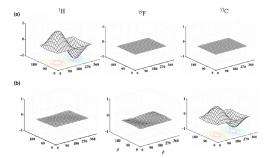March 7, 2011 feature
Quantum no-hiding theorem experimentally confirmed for first time

(PhysOrg.com) -- In the classical world, information can be copied and deleted at will. In the quantum world, however, the conservation of quantum information means that information cannot be created nor destroyed. This concept stems from two fundamental theorems of quantum mechanics: the no-cloning theorem and the no-deleting theorem.
A third and related theorem, called the no-hiding theorem, addresses information loss in the quantum world. According to the no-hiding theorem, if information is missing from one system (which may happen when the system interacts with the environment), then the information is simply residing somewhere else in the Universe; in other words, the missing information cannot be hidden in the correlations between a system and its environment. Physicists Samuel L. Braunstein at the University of York, UK, and Arun K. Pati of the Harish-Chandra Research Institute, India, first proved the no-hiding theorem in 2007. Until now, however, the no-hiding theorem has been a purely theoretical concept.
Now for the first time, a team of physicists consisting of Pati, along with Jharana Rani Samal (deceased) and Anil Kumar of the Indian Institute of Science in Bangalore, India, has experimentally tested and confirmed the no-hiding theorem. The physicists have published their study on the no-hiding theorem test in a recent issue of Physical Review Letters. The work is dedicated to the memory of Samal, who died in November 2009 on her 27th birthday, and who performed all of the experimental work of the paper.
“In quantum information science, two fundamental theorems have been the no-cloning and the no-deleting theorems,” Pati told PhysOrg.com. “They bring out essential differences between quantum and classical information and are also intimately connected to the conservation of quantum information. However, these two theorems cannot be tested experimentally in the sense that these operations are not allowed by quantum mechanics. (Since these operations are not allowed, we cannot implement them in the laboratory.) The best that one can do is to experimentally demonstrate the approximate cloning or approximate deleting of quantum information. (Note that the latter operations are allowed because you are not demanding exact cloning or exact deleting.) Now, the no-hiding theorem is a first of its kind, which is also related to the conservation of quantum information and can be subjected to experimental tests. In this respect, our experiment is also the first experimental test of a no-go theorem in quantum information. It is important to demonstrate experimentally whether the prediction of quantum theory comes true or not.”
The scientists performed the test using nuclear magnetic resonance (NMR), a technique that has previously been used to test other quantum information protocols, such as Shor’s algorithm and Grover’s algorithm, and is also used in magnetic resonance imaging (MRI). Here, the scientists used three magnetic nuclei of hydrogen, fluorine, and carbon from a large molecule (13CHFBr2). The three magnetic nuclei represent three qubits, one of which contains the original information, and the other two of which are ancilla qubits and are prepared in fixed states.
In order to make the first qubit “lose” its information, the scientists had to make the system undergo a bleaching process. In their experiment, they bleached the system through quantum state randomization, in which the qubit transforms from a pure state to a mixed state. Although the randomization operation causes the qubit to appear to lose the information contained in the pure state, the scientists showed that the information could be found in one of the two ancilla qubits. They also demonstrated how to use the ancilla qubits to reconstruct the original state, showing that no information was hiding in the correlations between the original qubit and the ancilla qubits, which is the essence of the no-hiding theorem.
“The greatest challenge for carrying out this experiment by NMR was the design of the pulse sequence for the ‘randomization operator,’” Kumar said. “This was achieved here by using a novel algorithmic technique developed in our laboratory by Ashok Ajoy (an M.Sc. student who has now gone to MIT, Boston, to do his Ph.D.). His method uses graphs of a complete set of base operators and develops an algorithmic technique for finding the decomposition of a given unitary operator into basis operators and their equivalent pulse sequences (to be published).”
In the future, the physicists plan to test the no-hiding theorem in more complex situations, such as in the context of coherent quantum teleportation, which will require the control and manipulation of a larger number of qubits. Overall, the quantum no-hiding theorem could have applications in areas such as quantum communication through private quantum channels, as well as black hole evaporation.
More information: Jharana Rani Samal, et al. “Experimental Test of the Quantum No-Hiding Theorem.” Physical Review Letters. 106, 080401 (2011). DOI: 10.1103/PhysRevLett.106.080401
Copyright 2010 PhysOrg.com.
All rights reserved. This material may not be published, broadcast, rewritten or redistributed in whole or part without the express written permission of PhysOrg.com.



















